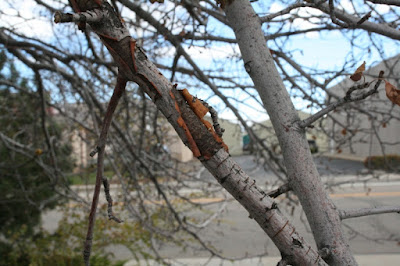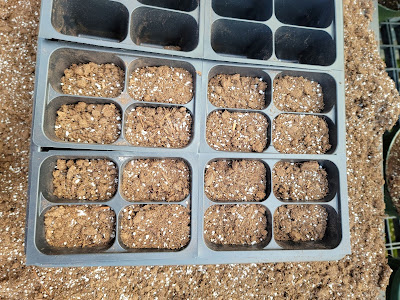The best time of year for pruning fruit and landscape trees and most shrubs is during the dormant season (late winter to early spring). Dormant-season pruning is beneficial because it reduces the risk of pest and disease issues affecting the pruning cuts (which are wounds that can allow entry of disease-causing organisms). Dormant season pruning also makes it easier to see the structure and shape of deciduous trees (without leaves obscuring the view), which allows better visualization of the desired outcome.
Tree pruning is important and necessary for several reasons. Pruning helps develop strong limbs and a studier structure. Pruning improves tree overall health by removing dead and diseased limbs and reducing the risk of storm damage. Pruning protects the value of your trees and increases their longevity.
Pruning while the tree is dormant has two distinct advantages over pruning when trees are active during the growing season. First, it’s easy to assess the general health of your trees because the interior of the tree is visible. In addition, at this time of year most of the tree’s energy is held in their root systems.
Pruning now allows the tree to direct all that stored energy into the remaining health branches and limbs resulting in a more vigorous growth come spring. Take advantage of some of these warmer late winter days and walk through your garden, paying particular attention to the crabapple, apple, pear trees and other deciduous trees.
At this point, you’re looking for broken branches or limbs, diseased branches, branches and twigs that crisscross or rub against one another. Removing these twigs, branches and limbs will open the center of the tree allowing light and air to get through and improve the tree’s overall health and vigor.
To accomplish your pruning task safely and effectively, you need a sharp set of pruners, a pair of long handled loppers and for higher limbs, a telescoping tree saw and pruner.
Safety is key in any tree pruning effort which means, if you can’t reach a branch or limb while you’re standing on the ground, you’re better off hiring a professional arborist or garden landscape service. For mature trees, the plan is to remove no more than one-third of the canopy. For trees that have been planted for five years or less, don’t remove more than twenty percent of the canopy.
For large branches that need to be removed, invest in a pruning saw and follow the three-step method. Starting 8" to 10" from the main branch, make the first cut upwards about halfway through the branch. Finish the cut from the top down to meet the first cut. This will remove most of the weight of the branch and prevent damage to the main trunk. The third cut is made downward just outside the collar, where the branch meets the trunk.
Next look for water sprouts and sucker shoots. These are easy to identify because they tend to grow straight up. Sucker shoots originate from the base of the tree. Water sprouts spring up from a branch.
Water sprouts and water suckers are signs of stress. They’re indicators of soil compaction, loss of root structure, drought, inadequate moisture.
Although fruit trees can be pruned in the spring and summer months, pruning in the winter has several advantages. Both for the tree, and the pruner! For starters, with their leaves gone for the season, branches are easy to see and cut. That is certainly not the case when trying to prune back a full canopy of leaves in spring or summer.
But even more importantly, because fruit trees are dormant in the winter, there is little stress to a tree when it is cut back. This allows the tree to conserve and store more energy for flowering and fruiting.
Know your shrubs, before you prune. Exceptions to dormant season pruning include early spring flowering shrubs such as lilacs, Rose of Sharon, Weigela, Forsythia. If you prune these now, you’ll remove any flowers.
You can prune summer flowering shrubs such as butterfly bush, blue mist spirea and hardy hibiscus in late winter or early spring, because they bloom on this year’s growth or “new wood”. In other words, they haven’t set flower buds yet.
Now's the time to prune them hard.
Pruning during the dormant season—when trees are not actively growing—minimizes stress on the tree and reduces the risk of disease transmission or pest infestations. This means stronger, healthier trees that can better withstand seasonal storms and environmental challenges. Dormancy pruning also enhances tree structure, improves safety by removing weak or hazardous branches, and promotes vigorous new growth in spring.
With any of this information, if you’re not sure what to prune or which tool to use, stop in and talk to us. We’ll help you.






























